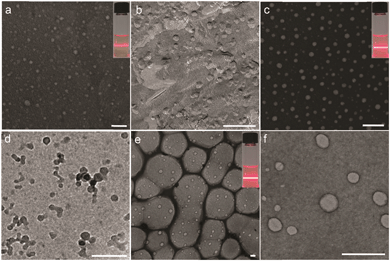 Open Access Article
Open Access ArticleCreative Commons Attribution 3.0 Unported Licence
Correction: Fluorescent vesicles formed by simple surfactants induced by oppositely-charged carbon quantum dots
Xiaofeng
Sun
ab,
Qinghong
Zhang
a,
Keyang
Yin
a,
Shengju
Zhou
ab and
Hongguang
Li
*a
aState Key Laboratory of Solid Lubrication & Laboratory of Clean Energy Chemistry and Materials, Lanzhou Institute of Chemical Physics, Chinese Academy of Sciences, Lanzhou, Gansu Province 730000, China. E-mail: hgli@licp.cas.cn
bUniversity of Chinese Academy of Sciences, Beijing, 100049, China
First published on 14th October 2016
Abstract
Correction for ‘Fluorescent vesicles formed by simple surfactants induced by oppositely-charged carbon quantum dots’ by Xiaofeng Sun et al., Chem. Commun., 2016, 52, 12024–12027.
The authors wish to clarify statements made in the original article regarding the cryo-TEM image shown in Fig. 2d. In the original article, the authors stated that the cryo-TEM image showed vesicles, however, this conclusion cannot be supported by the data provided, and Fig. 2d of the original article likely only shows ice contamination. Whilst Fig. 2d and the interpretation of the cryo-TEM image is ambiguous, this has no impact on the overall conclusions of the paper.
The Royal Society of Chemistry apologises for these errors and any consequent inconvenience to authors and readers.
| This journal is © The Royal Society of Chemistry 2016 |

